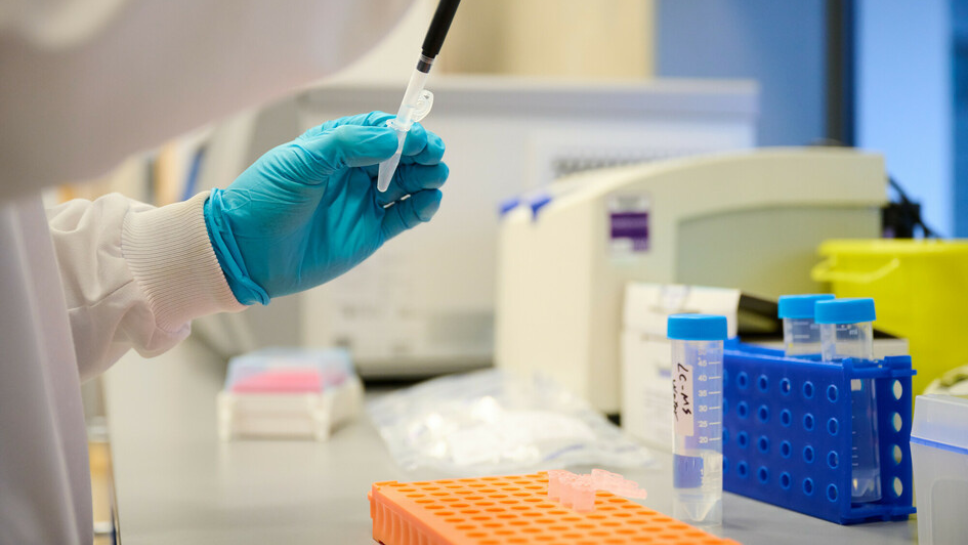When 26-year-old Hayley began experiencing double-vision, she could never have guessed that a year later it would lead to her being diagnosed with a muscle-wasting condition. As Hayley adjusts to a new diagnosis, her best friend and housemate Jessie is preparing to jump out of a plane to raise money for MDUK – and to raise awareness of conditions like Hayley’s.
New insights into the complexities of Emery-Dreifuss Muscular Dystrophy

Emery-Dreifuss muscular dystrophy (EDMD) affects approximately one in every 250,000 people. EDMD is generally characterised by early-developing symptoms, such as muscle contractures, muscle weakness and heart problems.
Understanding EDMD can be difficult because even family members with changes in the same genes can experience very different symptoms, the severity of which can vary, while people who don’t have any genetic similarities can still have similar symptoms. This means that the relationship between genes and symptoms in EDMD is not straightforward, making research into EDMD a challenge.
Unravelling the complexity of EDMD
This MDUK-funded research investigated the way cells work in people with EDMD. The results show that there are specific ways in which the cells of people with EDMD function differently. The researchers analysed cells from 10 people with EDMD, who have different changes in seven EDMD-related genes. They found that these genetic changes affect various cellular processes. This leads to variations in how the body produces energy, how scar tissue forms, and how genes work between these 10 people.
By understanding how these differences vary amongst people with EDMD, the researchers hope to better predict how EDMD will progress in each person who has the condition. This will allow doctors and scientists to develop new treatments to target these differences, as well as provide more personalised care for people with EDMD.
Hope for improved diagnosis and treatment
With this new understanding of the complexities of EDMD, researchers are one step closer to developing therapies tailored to each individual affected by the condition. In the future, the researchers will continue to study EDMD and work to validate their findings, bringing us closer to a world where EDMD is no longer a mystery, but a manageable condition.
For more information, please refer to the original research article, which is available here.
‘What’s new in research’ is our monthly blog series featuring recent advancements in research into muscle-wasting conditions. Each month, we choose a research article that will be summarised for you by our research communications volunteers, all of whom have backgrounds in various fields of research.
This ‘What’s new in research’ piece was written by Dr Larissa Ferguson. Dr Ferguson is a postdoctoral researcher at the MRC Laboratory of Molecular Biology in Cambridge, UK, and is currently researching the molecular mechanisms of neuronal communication. Dr Ferguson has a deep commitment to scientific communication and values the opportunity to share knowledge that can positively impact public health.


